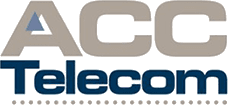Overview
On August 1, 2019, the Federal Communications Commission (FCC) adopted rules to Multi-Line Telephone Services (MLTS) purchased or installed after February 16, 2020 to implement Kari’s Law and Section 506 of RAY BAUM’S Act e911-related requirements.
What are Kari’s Law Requirements?
Kari’s Law applies to Multi-line Telephone Systems (MLTS) “manufactured, imported, offered for first of sale or lease, first sold or leased, or installed” after the compliance date of February 16, 2020.
It requires:
- Prohibiting the Requirement For a ‘Prefix’ When Calling 911*– Locations with MLTS must remove any requirement that a caller dial a ‘9’, or any other number to reach an outside line to make a call to 911.
- On-site Notifications*– When a 911 call is placed from an MLTS, a notification must be sent to on-site personnel, alerting them to the emergency. The notifications to the appropriate contact can take the form of phone calls, visual alerts on a monitor, audible alarms, text messages, and/or emails.
*All new phone systems installed or purchased after 2/16/2020 must comply with these rules.
**Exceptions to this rule have been granted to ‘legacy phone systems’, which includes any phone system installed prior to 2/16/2020.
Though The FCC commission is not requiring enterprises like ACC Telecom to notify end users of the 911 capabilities and limitations of MLTS that are “not subject to the statute and rules,” we highly encourage MLTS system managers to remove the prefix completely or train their personnel how to adequately dial 911 from their MLTS should it require a prefix, as well as develop best practices to prepare for a 911 emergency.
Please be aware that though legacy phone systems may not have to legally comply with these requirements, they may still be at risk from litigation and negative media attention if their end user’s expectations are not met. It is encouraged to upgrade your legacy phone system to a compliant system as soon as possible.
Section 506 of RAY BAUM’s Act
RAY BAUM’s Act requires MLTS systems convey a dispatchable address (defined as: “the street address of the calling party, and additional information such as room number, or similar information necessary to adequately identify the location of the calling party”) to public safety with a 911 call. On August 2, 2019, the FCC released its Report and Order that adopted such rules and concluded its proceeding as directed by Section 506.
What does section 506 of RAY BAUM’s Act cover?
Pursuant to rulemaking by the FCC, Section 506 of RAY BAUM’s Act requires that organizations with Multi-Line Telephone Systems (MLTS) provide the dispatchable location, i.e., street address, floor, room and/or suite number (if applicable) to public safety with 911 calls.
Is my Business Phone System Compliant?
Business phone systems installed by ACC Telecom after 2/16/2020 offer the appropriate default requirements to 1) restrict prefixes, 2) offer on-site notifications if a 911 call was placed, and 3) provide a dispatchable location to 911 call centers.
All ACC cloud-based or 3CX phone systems installed prior to 2/16/2020 also offer the appropriate default requirements; however, some customers may have chosen to add a dial-out prefix, or may not have updated their address since the inception of the FCC rulings. Therefore, it is encouraged that ALL users follow the 911 Guideline Checklist below to confirm that your MTLS is compliant should the FCC change their stance on legacy systems.
911 Regulatory Checklist
Providing 911 emergency support in the enterprise doesn’t just happen. It requires careful planning, especially in the midst of cloud migration.
Below is a list of questions and tips to help you maintain connections to 911 and regulatory compliance while keeping your users safe.
Can users direct-dial 911 without the need to dial an access code first?
One way to think about this is: could a child call for help without knowing how to operate the office phone system?
Have you accurately mapped your users’ endpoint locations, including address, building, floor and/or room?
Dispatchable location (part of the requirement under RAY BAUM’s Act) is essentially the specific location that first responders need to find to assist callers. This address needs to be formatted correctly and validated for errors in a master street address guide (MSAG) format.
Have you tested 911 across each of your endpoints by dialing 933?
933 testing helps to limit the disruption that occurs when scheduling live 911 calls with public safety. Calling 933 from any 911 endpoint will trigger an automated voice message relaying the caller name, call back number and address assigned to that endpoint.
Do you have a plan for virtual workers and satellite offices?
Your HR, facilities, and IT teams can work with your legal counsel to help you determine how to support users in remote locations.
Are notifications set up to notify key personnel in the event there’s an emergency?
Depending upon your system, notifications can be provided via email, phone call recording, or SMS text message formats. To help customers with e911 compliance, our portals offer a notification feature with both our e911 for VoIP and Unified Communications and e911 Dynamic Location Routing solutions.
Questions?
Please contact your ACC Telecom Account Representative with any questions or concerns.
